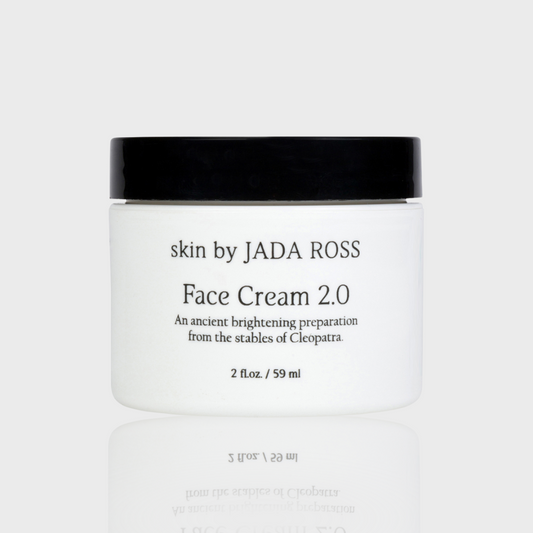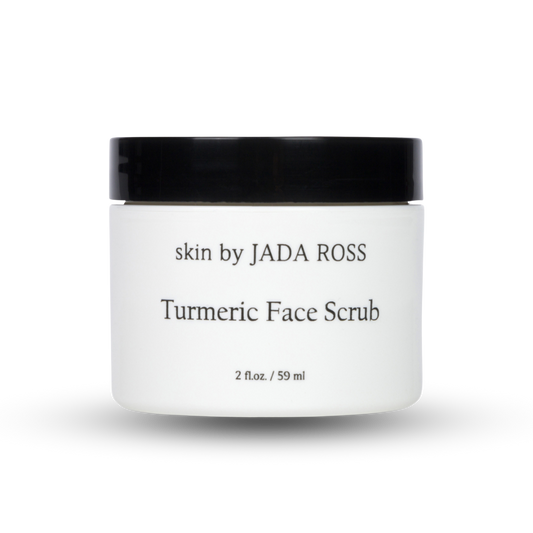How to Achieve a Youthful Glow with Regular Exfoliation
Achieving radiant and young skin is a common goal for many individuals. As time passes, our skin naturally changes, sometimes resulting in dullness, dryness, and even fine lines and wrinkles. Regular exfoliation is one of the most effective ways to restore a healthy glow. This simple yet powerful skincare technique removes dead skin cells, allowing fresh, vibrant skin to emerge.
In this blog, we will explain why exfoliation is so important, how it contributes to healthy skin, the various types of exfoliation, and the best practices to follow for optimal results.
Whether you're just starting with exfoliation or looking to improve your current skincare routine, this article will offer practical, expert-backed advice.

Understanding Exfoliation
What is exfoliation?: Exfoliation is sloping off dead skin cells that accumulate on the skin's surface. These dead skin cells can cause the skin to appear dull and may clog pores, leading to breakouts and uneven texture. Regularly removing the buildup allows newer, healthier skin cells to emerge, promoting a fresher, youthful appearance.
Why is Exfoliation Important for Skin Health?: Exfoliation is more than just a technique for achieving smooth skin; it offers several health benefits for your skin:
- Unclogs Pores: Dead skin cells, oils, and dirt can accumulate in pores, leading to clogged pores, acne, and blackheads. Regular exfoliation helps clear these blockages.
- Promotes Skin Renewal: Exfoliation encourages the skin’s natural regeneration process, leading to fresher skin. This helps combat the slow cell turnover rate as we age.
- Improves Skin Texture and Appearance: Exfoliation removes dead skin cells, revealing smoother, brighter skin. It helps minimize the appearance of rough patches, age spots, and hyperpigmentation.
- Stimulates Collagen Production: Exfoliation helps promote collagen production, which is essential for skin elasticity and firmness and prevents the formation of fine lines and wrinkles.
The Science Behind Exfoliation: When you exfoliate your skin, stimulate cellular turnover, which is the process by which new skin cells are produced. As we age, this turnover process slows down, which can cause the skin to appear dull and rough. Exfoliation helps to counteract this by speeding up cell turnover, allowing for healthier and more youthful skin. Additionally, regular exfoliation can stimulate collagen production, improving the skin's firmness and elasticity over time.

Different Types of Exfoliation
Understanding the different methods of exfoliation can help you choose the best approach for your skin’s needs.
Physical Exfoliation: Physical exfoliants for face, such as scrubs or brushes, rely on manual abrasion to remove dead skin cells. Some standard tools include:
- Scrubs: These can contain natural grains or synthetic beads that physically scrub away dead skin. While effective, they may be abrasive and should be used cautiously, particularly for sensitive skin.
- Brushes and Sponges: Tools like facial brushes or sponges can manually exfoliate the skin. They tend to be less abrasive than scrubs but can still provide good results.
Advantages and Disadvantages of Physical Exfoliation:
- Advantages: Instant results, easy to use, and can be quite effective in revealing smoother skin.
- Disadvantages: It can be harsh on sensitive skin, leading to irritation or microtears. It is not recommended for individuals with rosacea or active acne.
Chemical Exfoliation: Chemical exfoliants use acids or enzymes to break down the bonds that hold dead skin cells together. Some common types include:
- AHAs (Alpha Hydroxy Acids): These are water-soluble acids derived from fruits or milk. They effectively remove dead skin cells on the surface, making them ideal for dry or sun-damaged skin.
- BHAs (Beta Hydroxy Acids): These oil-soluble acids penetrate deeper into the pores. BHAs are great for oily or acne-prone skin as they help clear blocked pores.
- Enzyme Exfoliants: These exfoliants use natural enzymes, often from fruits like papaya or pineapple, to break down dead skin cells. They are typically gentle and suitable for sensitive skin.
Which Type of Exfoliation is Best for You?: Choosing the correct type of exfoliant depends on your skin type and concerns. If you have sensitive skin, enzyme exfoliants or a mild AHA may be the best option. BHAs like salicylic acid are often more effective at clearing pores for oily or acne-prone skin.

The Benefits of Regular Exfoliation
Regular exfoliation offers numerous benefits that go beyond just improving texture. Let’s explore how exfoliation can enhance your skin:
- Promotes a Youthful Glow: Regular exfoliation helps you achieve a radiant complexion by removing dull, dead skin cells and stimulating the production of fresh skin. As new skin emerges, it often appears smoother, more even-toned, and glowing.
- Improves Skin Texture: Exfoliating improves the overall texture of your skin. Regularly removing dead skin cells makes your skin feel softer and clearer. This can particularly benefit those with rough, uneven skin or clogged pores.
- Fights Premature Aging: Exfoliation can help reduce the appearance of fine lines, wrinkles, and age spots. By stimulating collagen production, exfoliation helps maintain the skin's firmness and elasticity, making it an essential part of any anti-aging skincare routine.
- Prevents Breakouts and Clogged Pores: Clogged pores are one of the leading causes of acne and blackheads. By exfoliating regularly, you can remove the buildup of oil, dead skin cells, and debris contributing to these skin issues.
- Increases Effectiveness of Other Skincare Products: Exfoliation clears the dead skin, which can act as a barrier, allowing other skincare products like serums and moisturizers to penetrate deeper into the skin. This enhances their effectiveness, ensuring that your skincare routine works optimally.
How Often Should You Exfoliate?
Frequency Guidelines for Different Skin Types: The frequency of exfoliation depends on your skin type:
- Sensitive Skin: Exfoliate once a week to avoid irritation.
- Normal to Combination Skin: 2-3 times a week is sufficient to maintain smooth, clear skin.
- Oily or Acne-Prone Skin: 3-4 times a week can help clear pores and reduce breakouts.
Signs You're Over-Exfoliating: Exfoliating too frequently can lead to over-exfoliation, which may cause:
- Irritation and Redness: Skin becomes inflamed and sensitive.
- Dryness or Tightness: Over-exfoliated skin can feel parched and uncomfortable.
Best Time to Exfoliate: Depending on your preference, you can exfoliate in the morning or evening. However, following up with sunscreen during the day is essential, as exfoliated skin is more vulnerable to UV damage.

How to Exfoliate Correctly
Follow this simple, step-by-step guide for optimal exfoliation:
- Cleanse your face thoroughly: Remove any dirt, oil, and makeup to ensure the exfoliant works effectively.
- Apply exfoliant: Using a physical scrub or a chemical exfoliant, apply it evenly to your skin.
- Massage gently: Use circular motions to scrub the skin gently for physical exfoliants. For chemical exfoliants, leave on for the recommended amount of time.
- Rinse: Use lukewarm water to rinse off the exfoliant, and pat your skin dry with a clean towel.
- Moisturize: Apply a moisturizer to ensure hydration and protect the freshly exfoliated skin.
Avoid Common Mistakes:
- Over-exfoliating: Don't exfoliate too frequently, as it irritates and damages the skin.
- Using harsh scrubs: Avoid overly abrasive scrubs, especially on sensitive skin.
- Forgetting sunscreen: Always apply sunscreen after exfoliating to protect your skin from sun damage.
Choosing the Right Exfoliant for Your Skin
Here are some of the best exfoliating products available:
Physical Exfoliators: Products like the Turmeric Face Scrub by Skin by Jada Ross are ideal for those who prefer scrubs for smooth skin. Its turmeric ingredients help rejuvenate dull skin.
Chemical Exfoliators: The Brightening Pads by Skin by Jada Ross use AHA to deeply penetrate pores and reduce pigmentation, making them perfect for uneven skin tones.
Natural DIY Exfoliation Options: Simple homemade exfoliants like sugar and honey scrubs, oatmeal, or fruit enzyme masks are great, budget-friendly alternatives.
Safety Tips for DIY Exfoliants: Always perform a patch test to avoid allergic reactions when using natural ingredients. Avoid overly harsh ingredients like salt or sugar on your face, as these can be too abrasive.

The Role of Sun Protection After Exfoliation
After exfoliating, your skin becomes more sensitive to UV rays, making sunscreen crucial. Exfoliated skin can burn more easily, and sun exposure can lead to pigmentation issues. Always use broad-spectrum sunscreen (SPF 30 or higher) to protect your skin from harmful UV rays after exfoliating.
Other Skincare Practices for Enhancing Your Glow
To achieve and maintain glowing skin, consider these additional skincare tips:
Hydration: Drink plenty of water and use hydrating skincare products to keep your skin plump and dewy.
Nutrition: Consume antioxidant-rich foods like berries, leafy greens, and nuts to support skin health from the inside.
Good Sleep Habits: Quality sleep is crucial for skin rejuvenation. Aim for 7-9 hours of sleep each night to give your skin the time it needs to regenerate.

Regular exfoliation is a vital step in maintaining youthful, glowing skin. It improves the texture and appearance of your skin and promotes long-term skin health by encouraging collagen production and enhancing the effectiveness of other skincare products.
By following the proper exfoliation practices and choosing the best products for your skin type, you can achieve radiant skin that looks fresh, smooth, and youthful. Consistency is key to visible results, so stick to your exfoliation routine and always protect your skin with sunscreen.






Leave a comment
Please note, comments need to be approved before they are published.